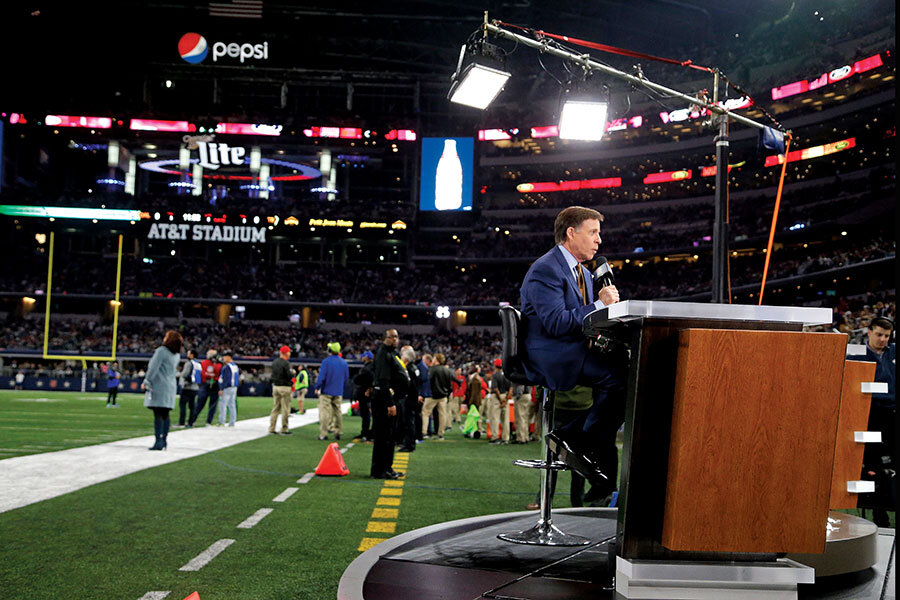What’s behind the NFL ratings drop?
Loading...
National Football League playoffs take center stage in January. Pro football continues to pull in the largest TV audiences, but some wonder whether ratings hiccups portend a long-term trend.
Viewership was down by double digits for prime-time games through much of 2016. Among the reasons cited: the retirement of quarterback Peyton Manning, the absence of suspended quarterback Tom Brady during the first month of play, a nation diverted by the spectacle of Donald Trump and Hillary Clinton battling, and growing concerns over player safety.
“I think there were a lot of ingredients in the stew this year,” said Mike Tirico, former play-by-play voice of ESPN’s “Monday Night Football” who is part of NBC’s NFL coverage.
Mr. Tirico also mentioned a generational shift in marquee teams and players, which can lead to declines in interest until fans become familiar with the next rivalries and stars. And it’s only a recent occurrence for the NFL to schedule Thursday prime-time games through the entirety of the regular season, points out Tirico. That means prime-time games are played on Sunday, Monday, and Thursday. It’s unlikely that a 32-team league can come up with compelling matchups for most of those time slots.
Despite the concerns, analysts don’t see 2016 as a canary – or concussion – in the coal mine. By late in the season, ratings for all games (not just those during prime time) were off by 10 percent, according to ESPN, rebounding from a previous deficit of 14 percent through Election Day. And the resurgent Dallas Cowboys, who were featured in several December prime-time games, generated strong interest.
Translation: By Super Sunday, the NFL believes it will be close to its normal lofty TV perch. But the question will hang around till next season: Has the glut of pro football, plus concerns over player safety, dimmed its status as America’s most popular sport?







